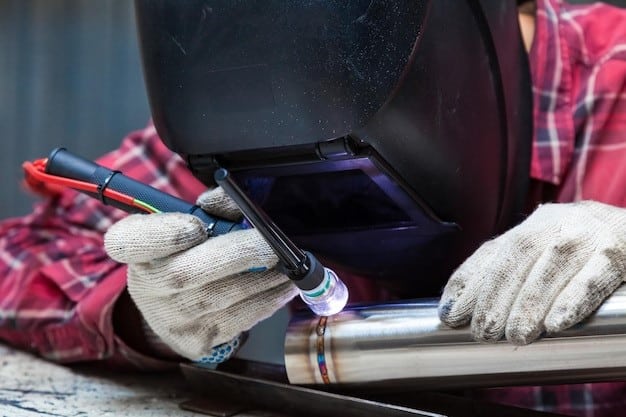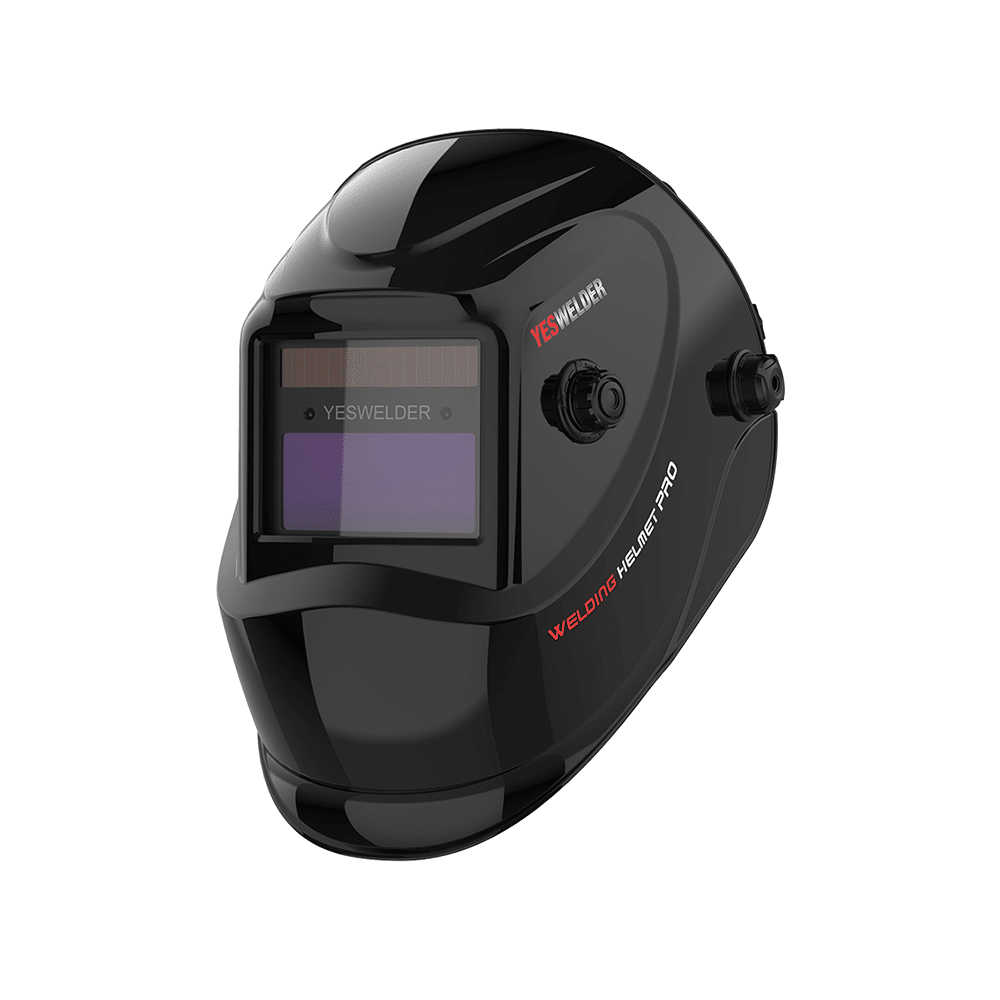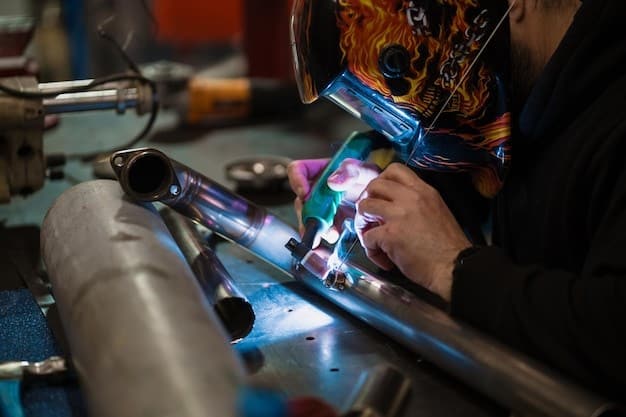The brilliant arc of a welder creates one of the most spectacular displays in the industrial world, and one of the most dangerous to human vision. That intense light that illuminates your workspace contains invisible radiation capable of causing permanent eye damage in seconds. Yet despite the serious risks, misconceptions about welding’s effects on eyes persist throughout the welding community.
From seasoned professionals who claim they’ve “never had problems” to newcomers who think safety glasses are sufficient protection, dangerous myths continue to put welders’ vision at risk. The reality is that welding produces multiple types of harmful radiation that can cause both immediate injury and long-term vision problems, making proper welding eye protection not just recommended, it’s essential for preserving your sight.
Understanding how welding affects your eyes, separating fact from fiction, and implementing comprehensive protection strategies can mean the difference between a lifetime of clear vision and irreversible damage that affects every aspect of your life.

How Welding Radiation Damages Your Eyes
Welding arcs produce intense electromagnetic radiation across multiple wavelengths, each presenting unique dangers to different parts of your visual system. Unlike the visible light you see every day, welding radiation includes ultraviolet (UV), infrared (IR), and intense visible light that can damage your eyes in ways ranging from temporary discomfort to permanent blindness.
Ultraviolet Radiation Effects: UV radiation from welding arcs is significantly more intense than sunlight, reaching levels that can cause photokeratitis (welder’s flash) in just seconds of exposure. This radiation primarily affects the cornea and conjunctiva, causing symptoms similar to severe sunburn on your eyeballs. The pain typically develops 6-12 hours after exposure, making it difficult to connect the damage to the welding activity.
More concerning is the cumulative effect of repeated UV exposure, which can lead to pterygium (tissue growth over the cornea), cataracts, and increased risk of certain eye cancers. These long-term effects often develop gradually over years, making them easy to ignore until significant damage has occurred.
Infrared Radiation Dangers: Infrared radiation penetrates deeper into the eye than UV, primarily affecting the lens and retina. While IR exposure doesn’t cause the immediate pain of UV burns, it contributes to cataract formation and can cause thermal damage to the retina. The lack of immediate symptoms makes IR exposure particularly insidious, you may not realize damage is occurring until it’s too late.
Intense Visible Light Impact: The brilliant visible light from welding arcs can overwhelm your retina’s ability to adapt, potentially causing temporary or permanent vision impairment. This intense light can damage photoreceptor cells and contribute to macular degeneration over time.
Dangerous Myths That Put Your Vision at Risk
Myth 1: “I Can Tell When I Need Protection”
The Reality: Many welders believe they’ll feel eye damage as it occurs, but this dangerous misconception puts vision at serious risk. UV and IR radiation can cause significant damage without immediate symptoms. By the time you feel the burning sensation of welder’s flash, substantial damage has already occurred.
The most insidious aspect of welding-related eye damage is that much of it accumulates silently over years. Cataracts, retinal damage, and other long-term effects develop gradually, often without noticeable symptoms until vision is significantly compromised.

Myth 2: “Safety Glasses Are Enough Protection”
The Reality: Regular safety glasses, even tinted ones, provide virtually no protection against welding radiation. The intense UV and IR emissions from welding arcs require specialized filters that meet specific welding eye protection standards to provide adequate protection.
Standard safety glasses typically filter only visible light and offer minimal UV protection, nowhere near the level needed for welding applications. Using inappropriate eye protection is often worse than no protection at all because it provides a false sense of security while allowing harmful radiation to damage your eyes.
Myth 3: “Quick Glimpses Won’t Hurt”
The Reality: Even brief exposures to welding arcs can cause immediate damage. A fraction of a second exposure can result in photokeratitis, and repeated “quick looks” accumulate damage over time. There’s no safe level of unprotected exposure to welding radiation.
Professional welders often develop the dangerous habit of briefly looking at welding arcs to check their work or observe others welding. These momentary exposures may seem harmless but contribute to cumulative damage that can lead to serious vision problems later in life.
Myth 4: “Distance Provides Protection”
The Reality: While distance does reduce radiation intensity, it doesn’t eliminate the danger. UV radiation can reflect off surfaces and reach your eyes from unexpected angles. Even when you’re not the one welding, nearby arcs can still cause eye damage if you’re not properly protected.
The inverse square law means that doubling your distance from the arc reduces radiation intensity by 75%, but this still leaves dangerous levels of radiation that require proper protection. Additionally, reflected radiation from walls, ceilings, and equipment can expose your eyes from multiple directions simultaneously.

Understanding Welding Eye Protection Standards
Proper welding eye protection standards have been developed through decades of research and real-world experience to ensure adequate protection against all types of welding radiation. These standards specify filter lens darkness levels, optical quality requirements, and mechanical protection criteria.
ANSI Z87.1 Standards: In the United States, the American National Standards Institute (ANSI) Z87.1 standard establishes requirements for welding eye protection. This standard specifies shade numbers for different welding processes and current levels, ensuring adequate protection against UV, IR, and visible light radiation.
The standard requires welding filters to block 99.9% of UV radiation and provide appropriate visible light filtering based on the welding process. Filters must also meet optical quality standards to prevent distortion that could affect welding accuracy or eye strain.
ISO Standards: Internationally, ISO 4850 and related standards establish similar requirements for welding filters. These standards ensure that welding eye protection meets consistent safety criteria regardless of manufacturer or country of origin.
Shade Number Selection: Proper shade selection is critical for adequate protection. Too light a shade allows harmful radiation through, while too dark a shade can compromise visibility and welding quality. The minimum shade recommendations are:
- Gas welding and cutting: Shade 3-6.
- Shielded metal arc welding: Shade 10-14.
- Gas tungsten arc welding: Shade 8-13.
- Gas metal arc welding: Shade 10-13.
- Plasma cutting: Shade 5-9.
Always use the darkest shade that allows you to see the welding zone clearly. When in doubt, start with a darker shade and adjust as needed for visibility.
Comprehensive Protection Strategies
Primary Protection: Welding Helmets and Filters
Auto-Darkening Helmets: Modern auto-darkening helmets represent the gold standard in welding eye protection. These helmets use electronic sensors to detect arc initiation and instantly darken the filter lens to the appropriate shade level. This technology eliminates the dangerous period between arc initiation and manual helmet positioning.

Quality auto-darkening helmets offer variable shade control, sensitivity adjustment, and delay settings that allow customization for different welding applications. Look for helmets with switching speeds of 1/10,000 second or faster to ensure immediate protection.
Passive Filter Helmets: Traditional passive filter helmets with fixed-shade lenses remain viable options for many applications. While they require manual positioning before welding begins, they’re reliable, cost-effective, and don’t depend on batteries or electronic components.
Choose passive filters with appropriate shade ratings for your welding processes, and ensure the lens meets relevant safety standards. Replace damaged or scratched filters immediately, as optical defects can compromise both protection and welding quality.
Secondary Protection: Safety Glasses and Side Shields
Even with proper welding helmets, additional eye protection is often necessary. Clear safety glasses worn under welding helmets protect against spatter, grinding debris, and other mechanical hazards. When working near others who are welding, specially designed observer glasses with appropriate shade ratings protect against reflected radiation.
Side shields on safety glasses protect against radiation and debris approaching from peripheral angles. This protection is critical in busy shop environments where multiple welding operations may be co-occurring.
Environmental Considerations
Ventilation and Fume Extraction: Welding fumes can irritate eyes and reduce the effectiveness of protective equipment. Proper ventilation and fume extraction systems protect not only your respiratory system but also your eyes by lowering irritant exposure.
Position fume extractors to draw contaminated air away from your breathing zone and eye area. In confined spaces, forced-air respiratory protection may be necessary to maintain clean air around your face and eyes.
Reflective Surface Management: Control reflective surfaces in your work area to minimize indirect radiation exposure. Light-colored walls and polished metal surfaces can reflect significant amounts of UV radiation. Consider using welding curtains or screens to contain arc radiation and protect nearby workers.
Lighting Design: Proper general lighting reduces eye strain and improves safety. Avoid dramatic contrasts between bright welding areas and dark surroundings, as this forces your eyes to constantly readjust and increases fatigue.
Long-Term Vision Health for Welders
Regular Eye Examinations
Welders should undergo comprehensive eye examinations annually, with particular attention to UV-related damage. Early detection of cataracts, retinal changes, or other welding-related eye problems allows for timely intervention and treatment.
Inform your eye care professional about your welding activities and any history of eye injuries or flash burns. This information helps them focus on potential problem areas and recommend appropriate monitoring schedules.
Recognizing Warning Signs
Learn to recognize symptoms that may indicate welding-related eye damage: persistent eye irritation, increased light sensitivity, blurred vision, or the appearance of halos around lights. These symptoms warrant immediate professional evaluation.
Don’t ignore minor eye irritation or fatigue – these may be early signs of cumulative damage that will worsen without proper intervention. Addressing problems early often prevents more serious complications.
Lifestyle Factors
Nutrition: Certain nutrients support eye health and may help protect against radiation damage. Antioxidants like vitamins C and E, zinc, and omega-3 fatty acids contribute to overall eye health. Leafy green vegetables rich in lutein and zeaxanthin may help protect the retina from light damage.
UV Protection Outside Work: Since welders already face significant UV exposure at work, protecting your eyes from solar UV radiation during off-hours becomes even more critical. Wear quality sunglasses that block 100% of UV radiation when outdoors.
Smoking Cessation: Smoking significantly increases the risk of cataracts and macular degeneration. For welders who already face elevated risks from occupational radiation exposure, smoking represents an additional serious threat to long-term vision health.
Creating a Culture of Eye Safety
Training and Education
Comprehensive eye safety training should be mandatory for all welding personnel. Training should cover the types of radiation produced by different welding processes, proper selection and use of protective equipment, and recognition of eye injury symptoms.
Regular refresher training helps reinforce safe practices and introduces new safety technologies and techniques. Include eye safety in all new employee orientation programs and ongoing safety meetings.
Equipment Maintenance and Replacement
Establish regular inspection and maintenance schedules for all eye protection equipment. Welding helmet filters should be checked for cracks, scratches, or other damage that could compromise protection. Auto-darkening helmet sensors and batteries require regular maintenance to ensure reliable operation.
Replace damaged or worn protective equipment immediately. The cost of replacement equipment is insignificant compared to the potential cost of vision loss and related medical treatment.
Enforcement and Accountability
Consistent enforcement of eye protection requirements is essential for maintaining a safe work environment. Management must demonstrate commitment to eye safety through both policy enforcement and personal example.
Encourage workers to speak up about eye safety concerns without fear of retribution. Often, frontline workers identify safety hazards that management might miss.

The Economic Reality of Vision Protection
The financial impact of welding-related eye injuries extends far beyond immediate medical costs. Vision impairment can end welding careers, reduce earning potential, and create lifelong medical expenses. Permanent vision loss affects every aspect of life, from driving ability to family relationships.
Quality welding eye protection represents one of the most cost-effective safety investments possible. Even premium auto-darkening helmets cost less than a single emergency room visit for eye injuries, and they last for years with proper care.
Consider the actual cost of inadequate eye protection: medical treatment, lost work time, reduced productivity, potential disability claims, and the immeasurable personal cost of vision impairment. Comprehensive eye protection is always a bargain when compared to these possible consequences.
Closing Thoughts
Your vision is irreplaceable, and welding presents serious threats that require serious protection. Understanding how welding affects your eyes, rejecting dangerous myths, and implementing comprehensive protection strategies based on established welding eye protection standards are essential steps every welder must take.
The technology exists to protect your vision completely throughout a welding career. Auto-darkening helmets, proper filter selection, secondary protection, and regular eye care can preserve your sight indefinitely. The choice is yours: invest in adequate protection now, or risk losing the vision you need for both your career and your life.
Don’t gamble with your eyesight. Implement comprehensive eye protection measures today, follow established safety standards, and make vision protection a non-negotiable part of every welding operation. Your future self will thank you for the vision to see it.



